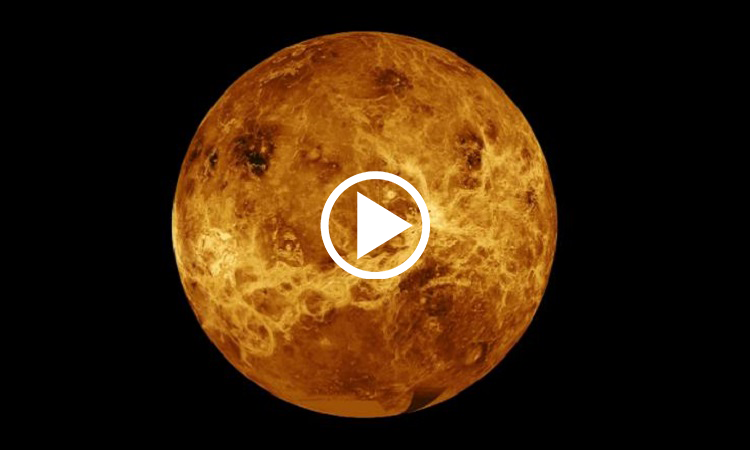NASA will launch two new missions to Venus to find out why the planet’s atmosphere has become so harsh over time.
NASA Director Bill Nelson announced the new mission on June 2 during a live broadcast of the NASA State Address. Two missions named DAVINCI + and VERITAS were selected from a final list of four spacecraft from the Discovery program. The two remaining spacecraft will visit the volcanic moons of Jupiter Io and Triton, Neptune’s largest moon.
DAVINCI + (Deep Atmosphere Venus Investigation of Noble Gases, Chemistry and Imaging) will travel through the atmosphere of Venus to learn more about its changes over time. Meanwhile, the VERITAS (Venus Emissivity, Radio Science, InSAR, Topography and Spectroscopy) mission will use radar to map the surface of Venus in detail from orbit.
“We hope these missions will broaden our understanding of how Earth has evolved and why the planet is habitable and not elsewhere in the solar system,” Nelson said.
The exploration missions cost $ 500 million, including the costs of launching and operating the mission. The two new Venus missions will launch between 2028 and 2030 and will carry a variety of experimental technologies and key scientific equipment.
VERITAS will be equipped with the Deep Space Atomic Clock 2, the successor to the technology launched into Earth orbit in June 2019. Ultra-precise clock signals will enable automated maneuvers of spacecraft and improve scientific radio observations.
VERITAS will map the surface of the planet to find out how Venus evolved differently from Earth. Earth is often referred to as the twin planet of Venus because the two are roughly the same size. The mission also collected data on the geological history of Venus. With radar, spacecraft in orbit can create 3D topographic maps, allowing scientists to determine the extent of volcanic activity and study infrared emissions from the planet’s surface.
DAVINCI + will bring a small-scale visible light ultraviolet imaging spectrometer, producing high resolution measurements using ultraviolet light, using a new instrument based on free-form optics. These observations will be used to determine the nature of the ultraviolet absorbers in the Venusian atmosphere.
The spacecraft will analyze the atmosphere of Venus to determine its formation and evolution. The mission also explored the possibility of the past oceans of Venus. The on-board equipment, in particular the cameras, will be protected from the hostile environment of the planet by a sphere. The medium is designed to transmit high resolution photographs of the unique feature called “tesserae”. Tesserae can be like a continent on Earth, which means Venus can contain plate tectonics. DAVINCI + will be the first American mission to study the atmosphere of Venus since 1978.
Venus could be the solar system’s first habitable planet, consisting of an Earth-like ocean and atmosphere. But something happened in the past that turned Venus into a planet with temperatures hot enough to melt lead. It is likely that Venus had a stable temperature and liquid water for billions of years before an event caused major changes to the planet, according to research from 2019. Today, Venus is a dead planet with gas.The toxic atmosphere is 90 times thicker. that the earth’s atmosphere and surface temperature reached 462 degrees Celsius.
NASA only conducted two missions to explore Venus: Pioneer in 1978 and Magellan in the early 1990s. Pioneer was the first mission to reveal that oceans could exist on Venus. But it is the second planet from the Sun, and researchers believe Venus does not have the right conditions to maintain an ocean.
NASA’s Discovery program encourages scientists and engineers to explore the solar system by designing new missions. Since 1992, the program has supported the development of more than 20 scientific instruments and missions.


